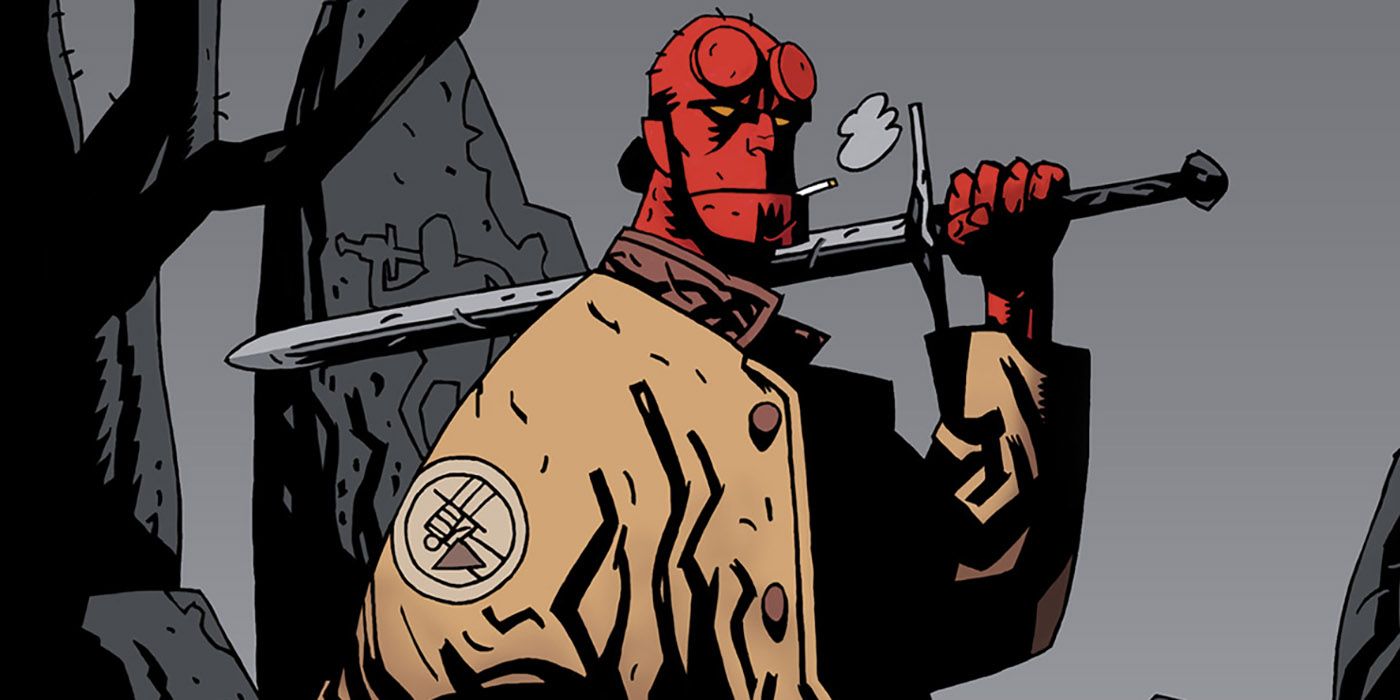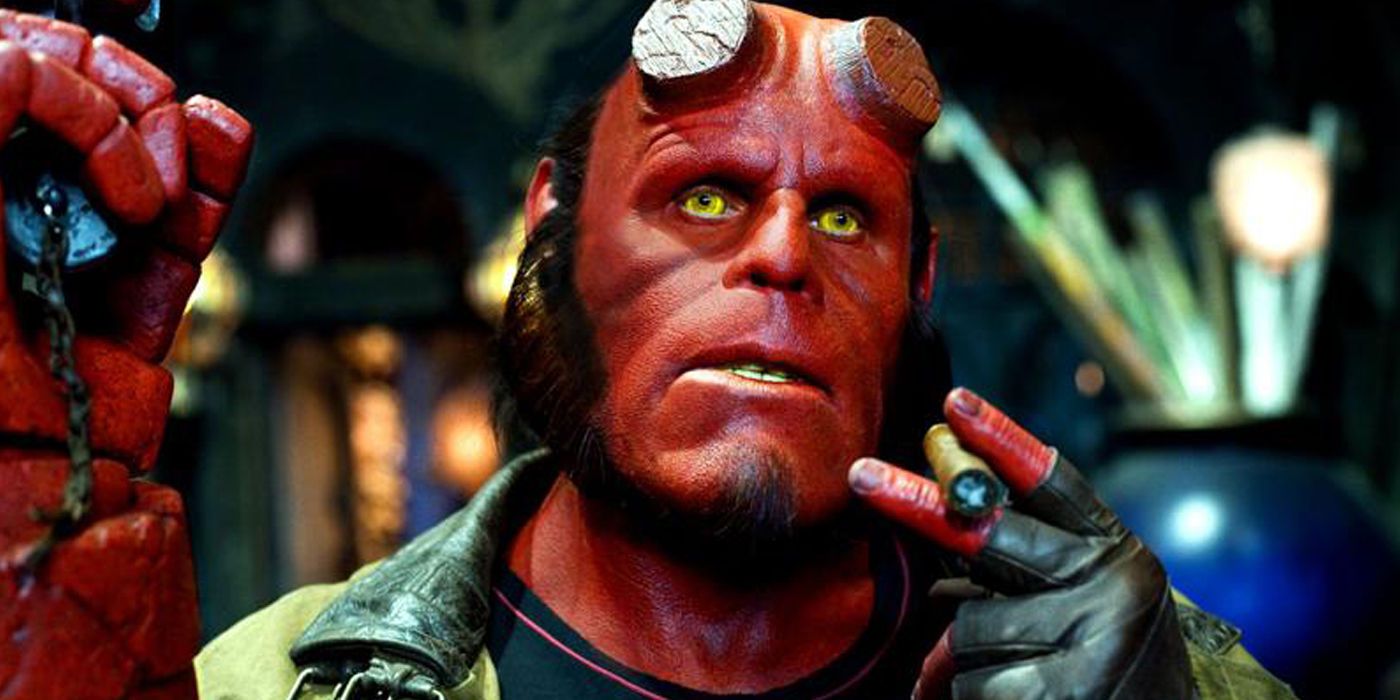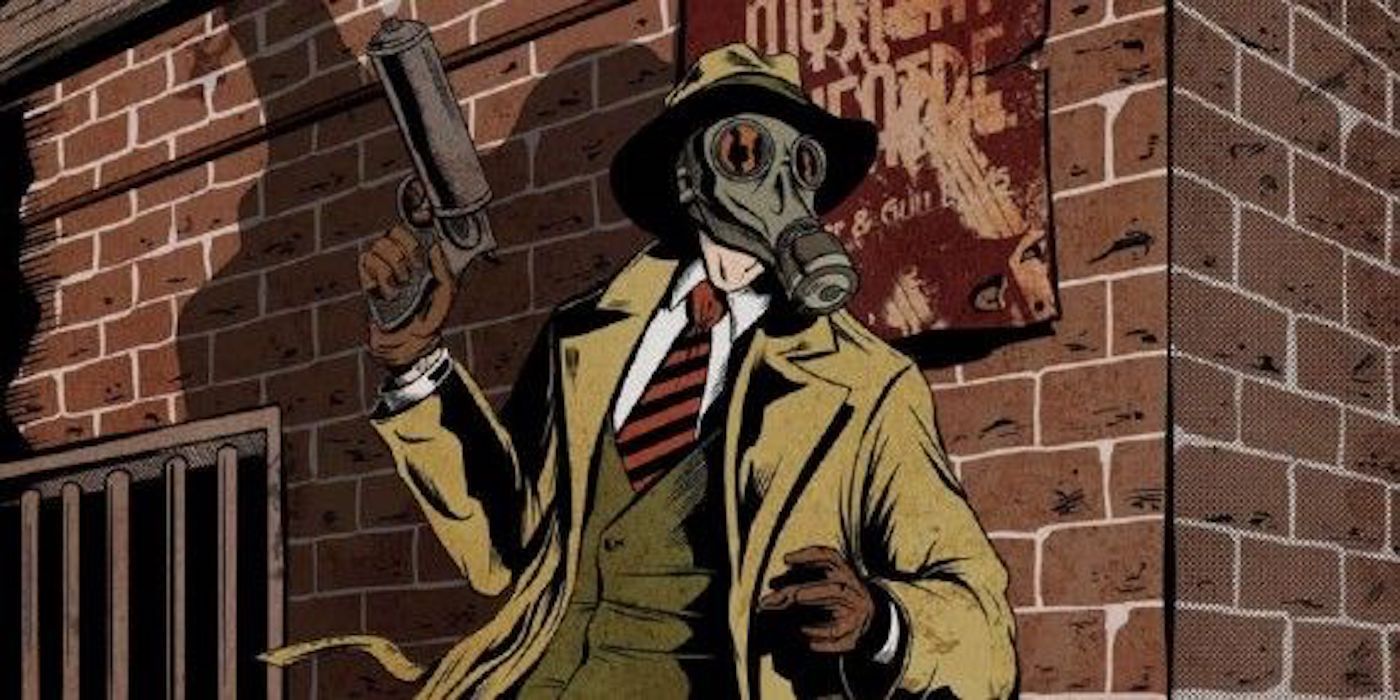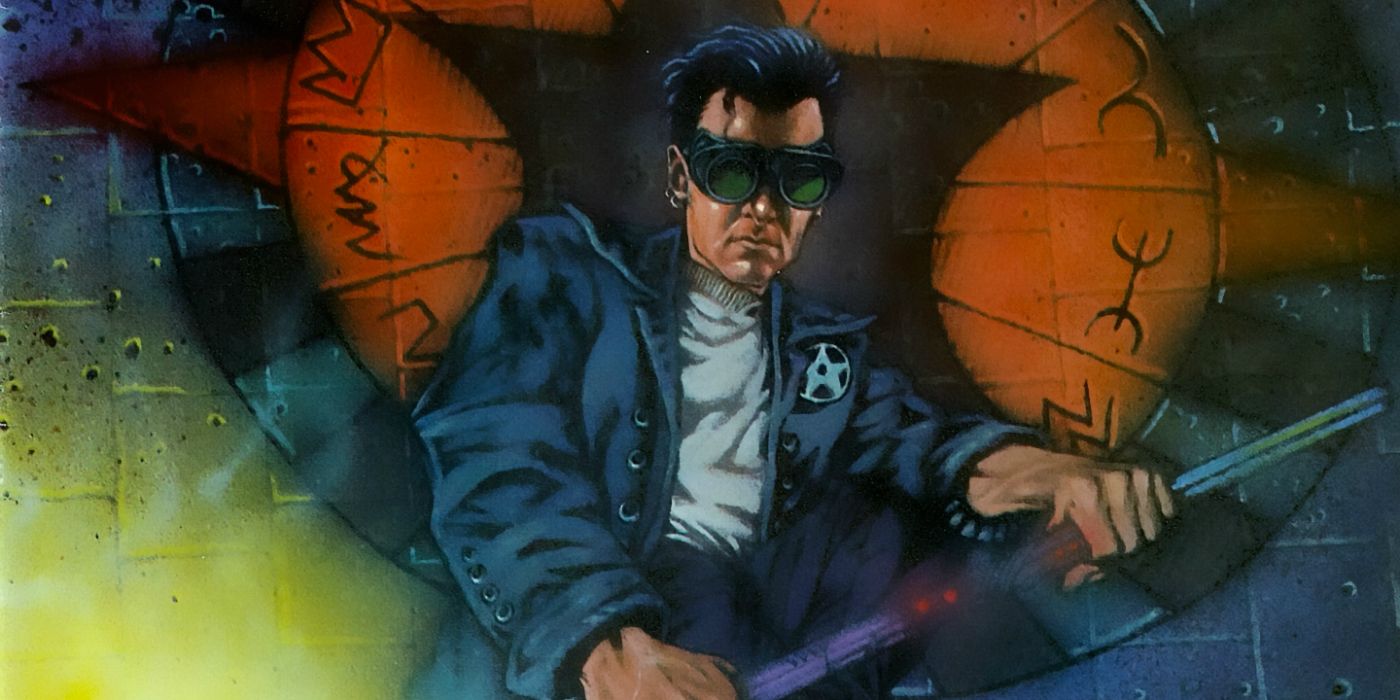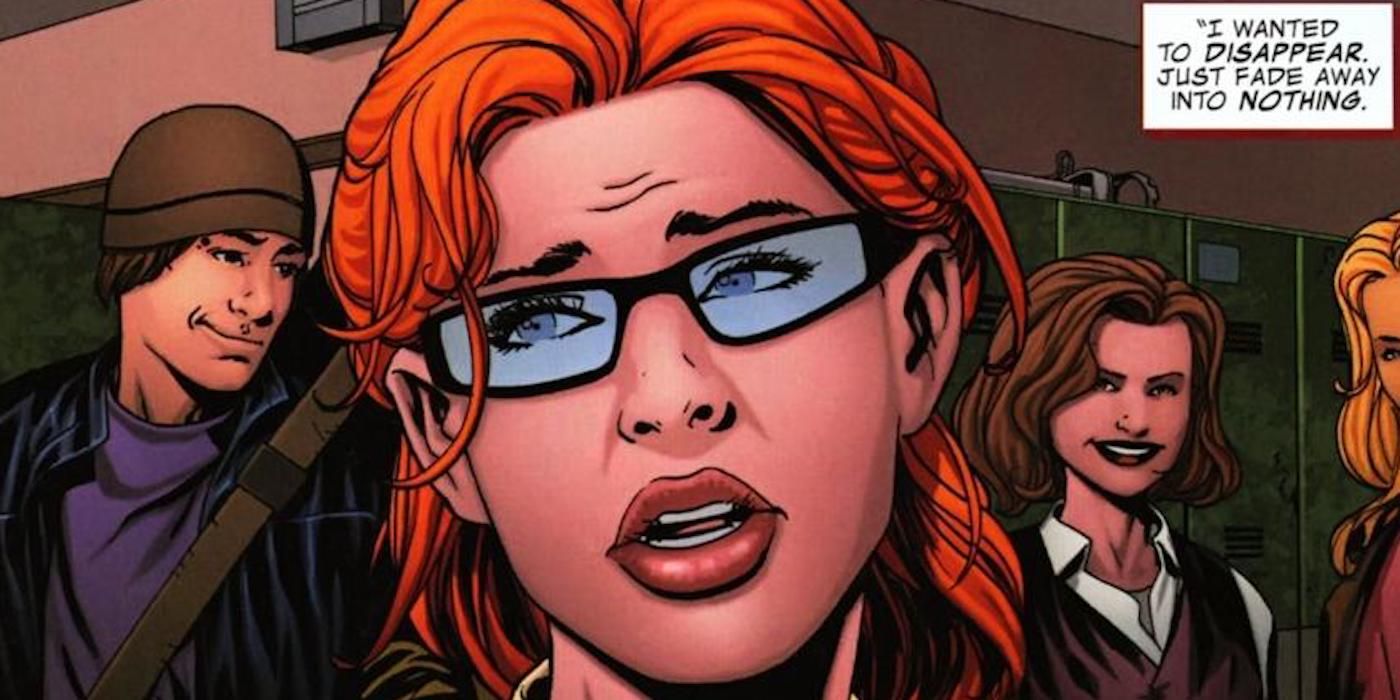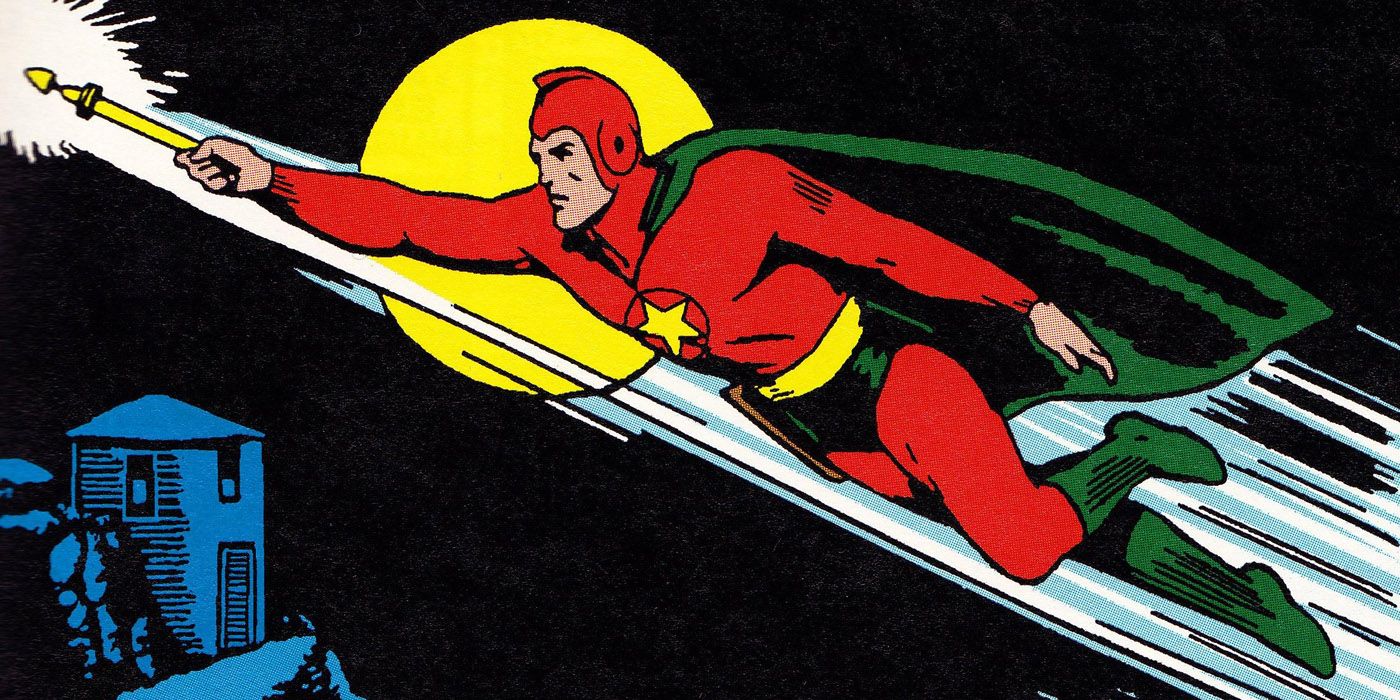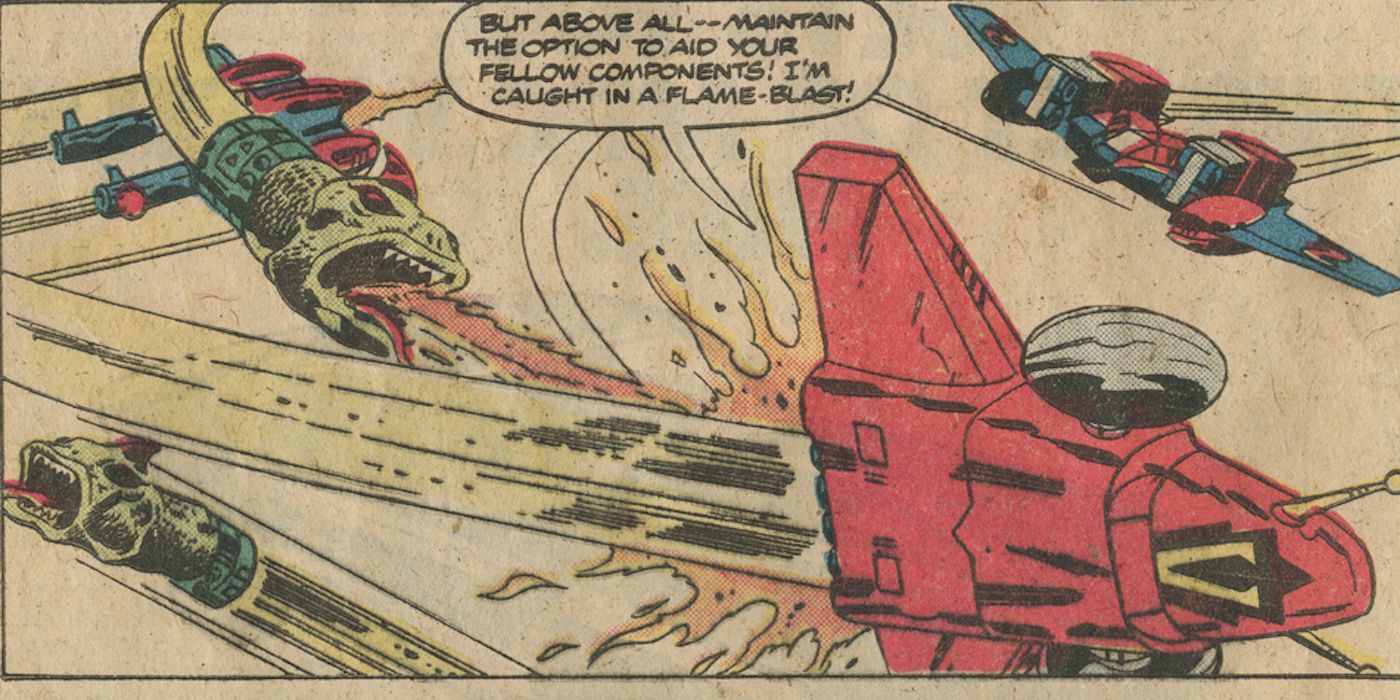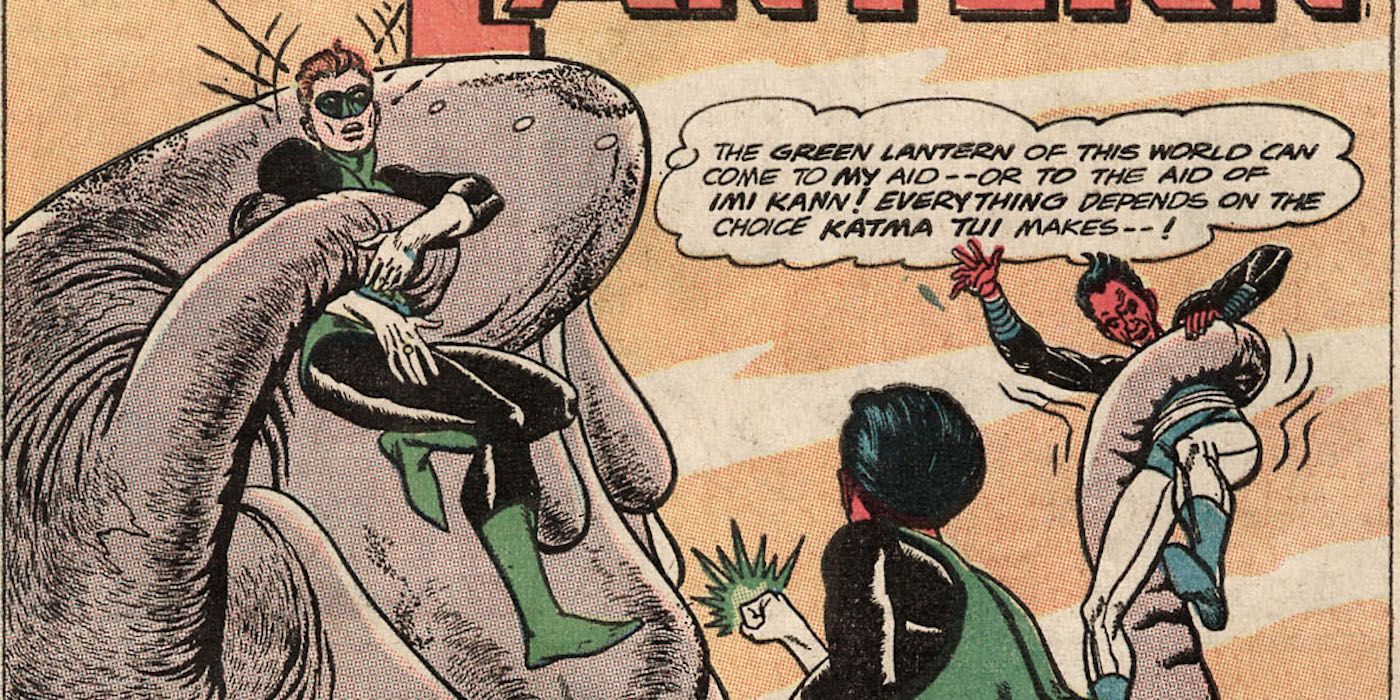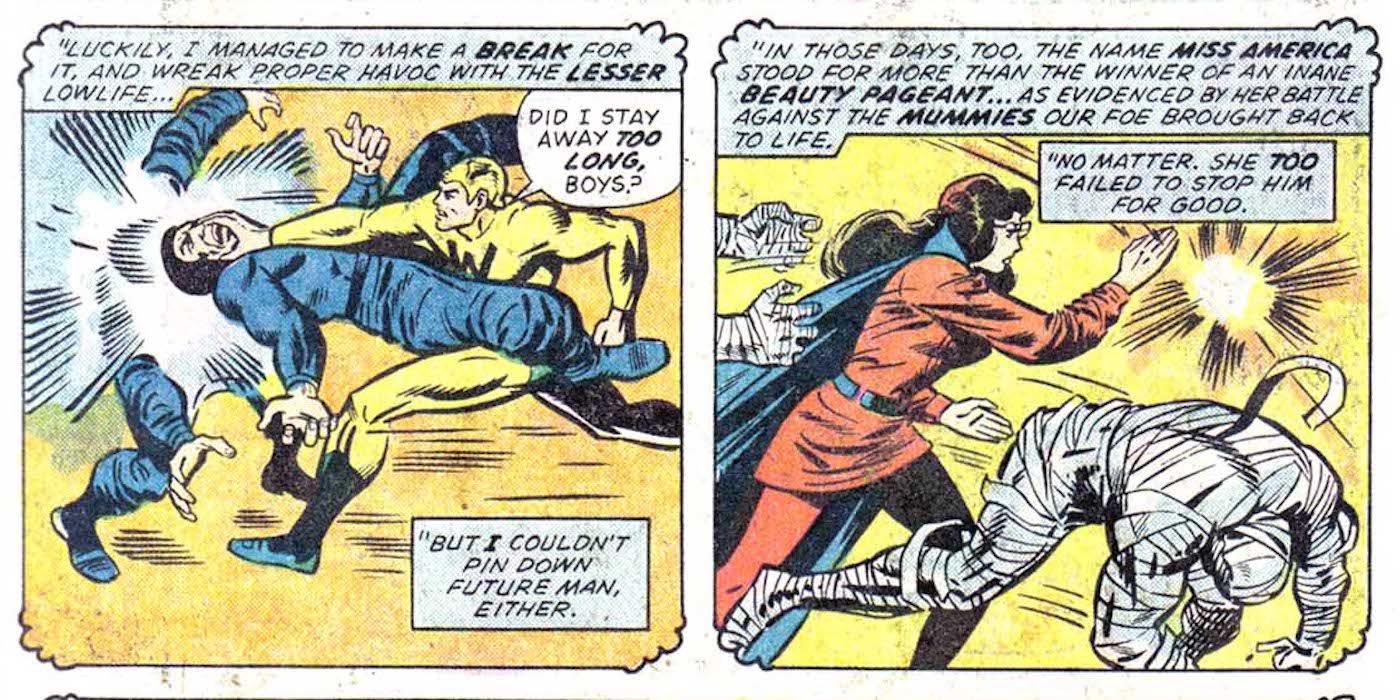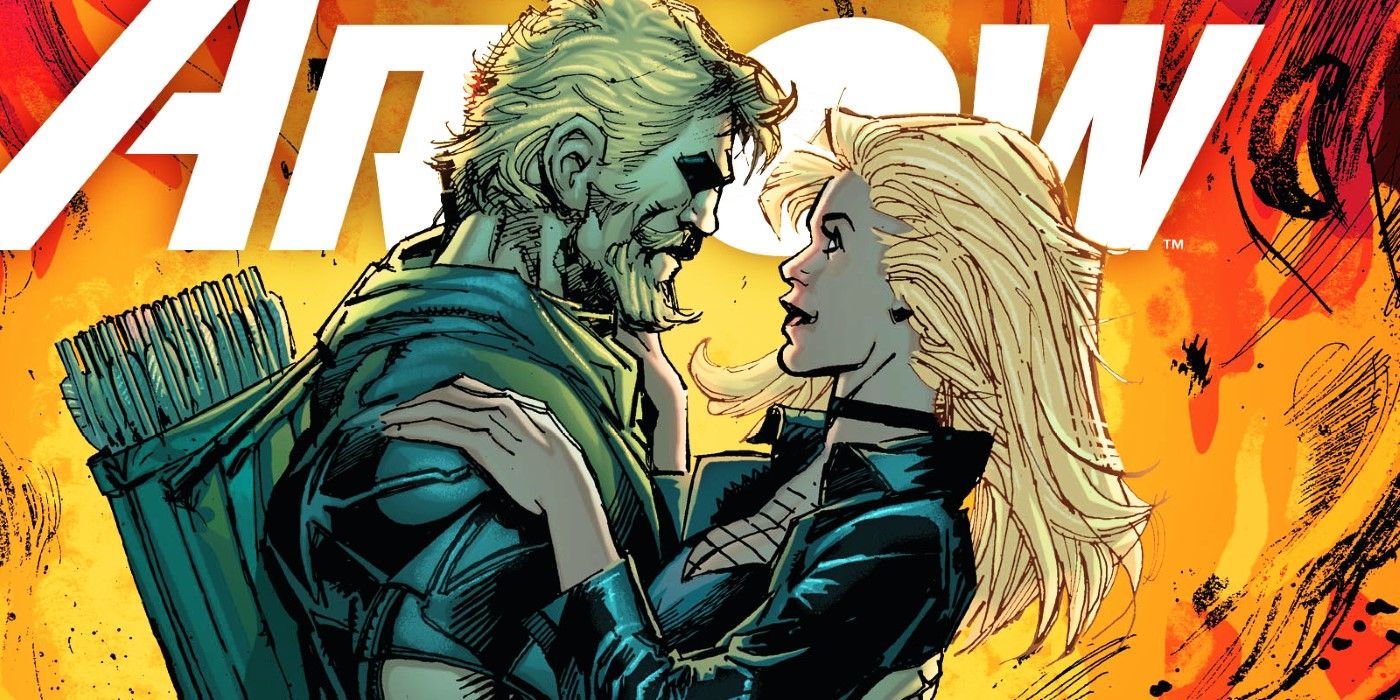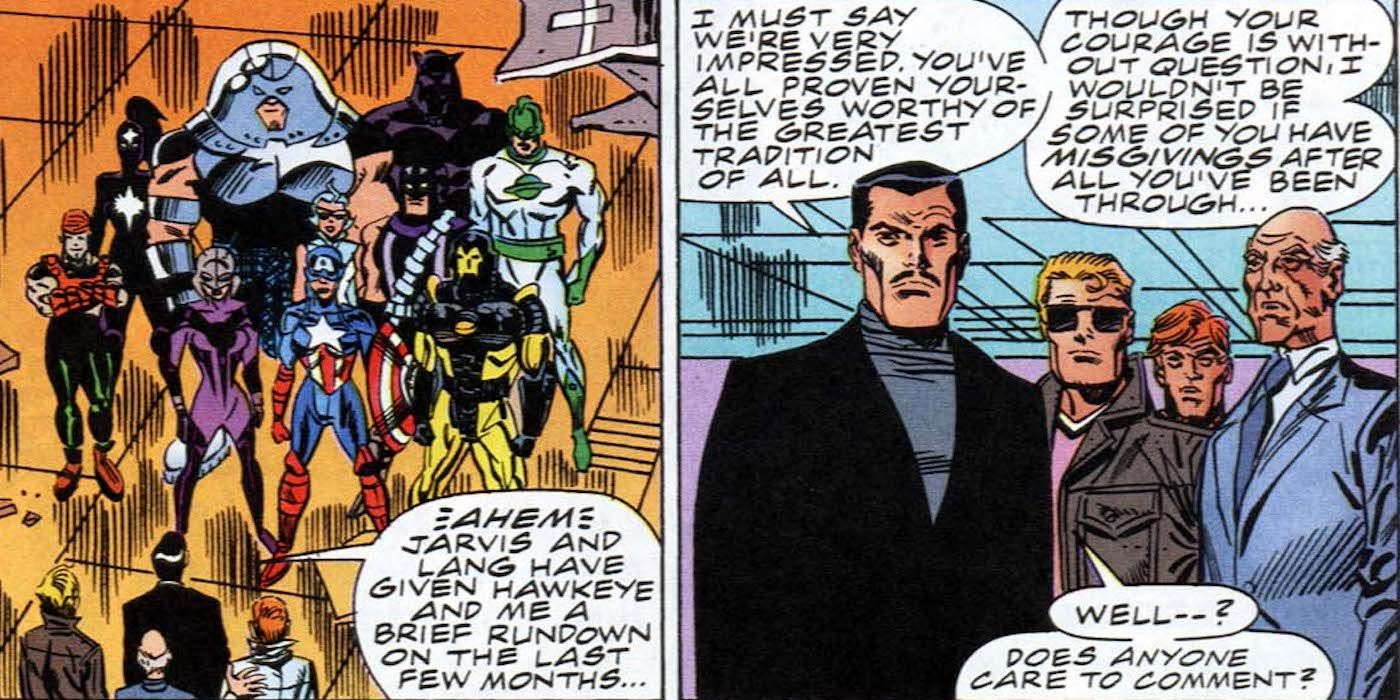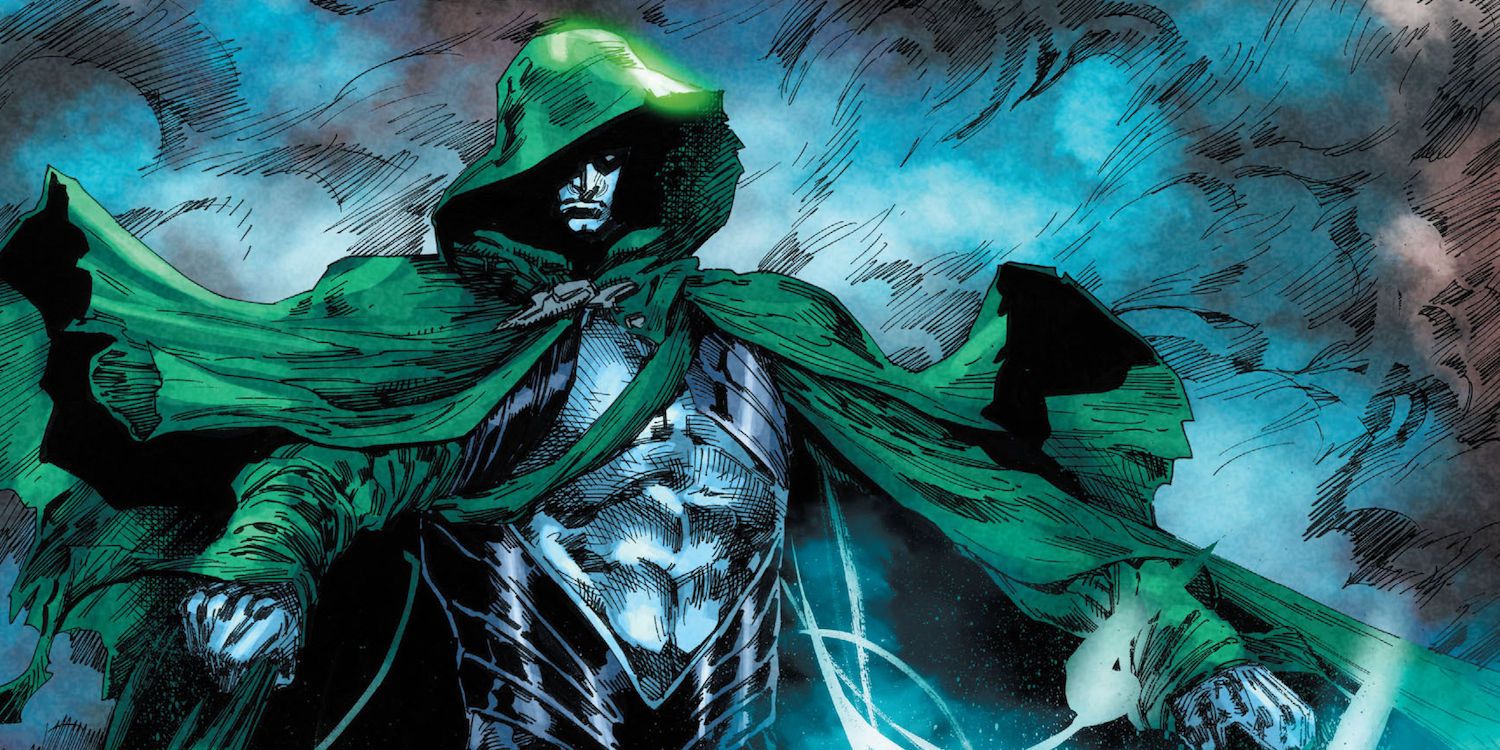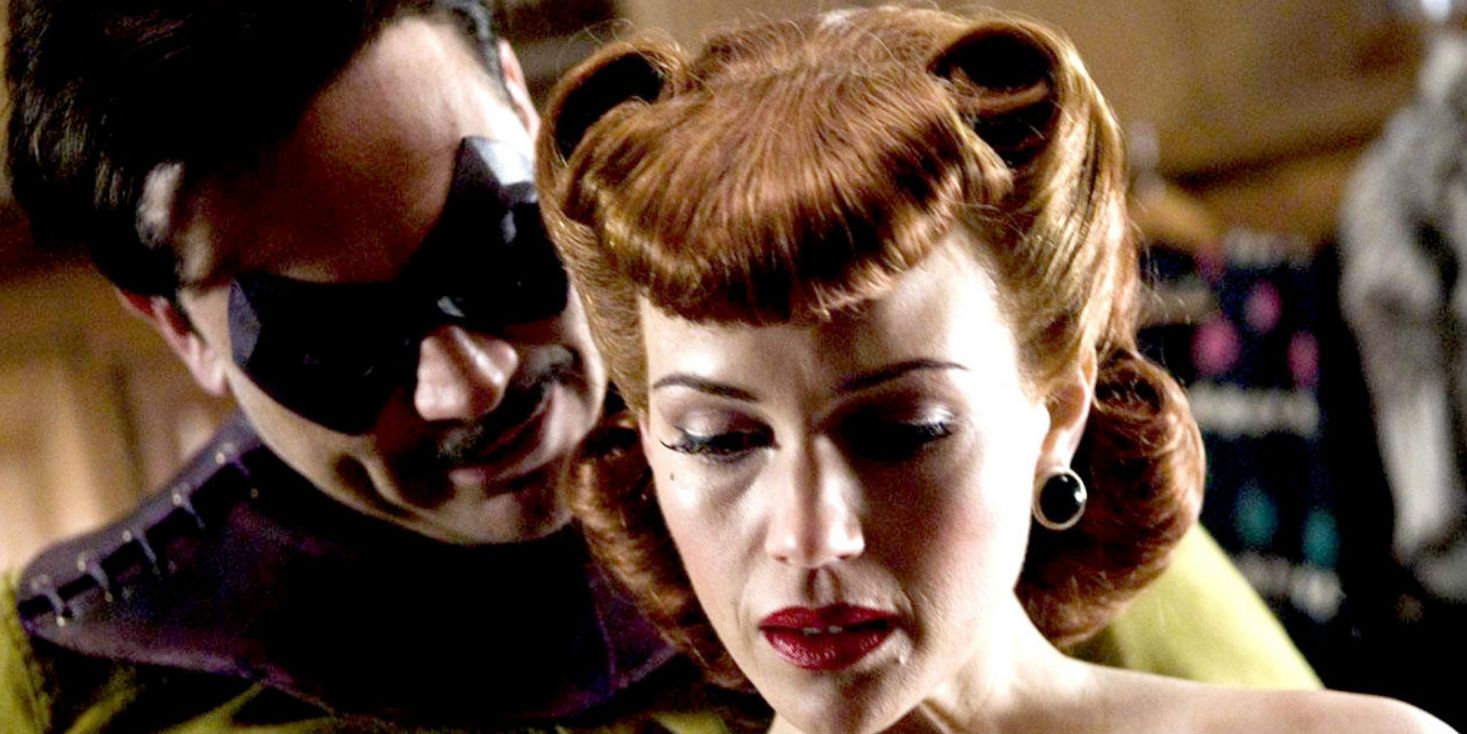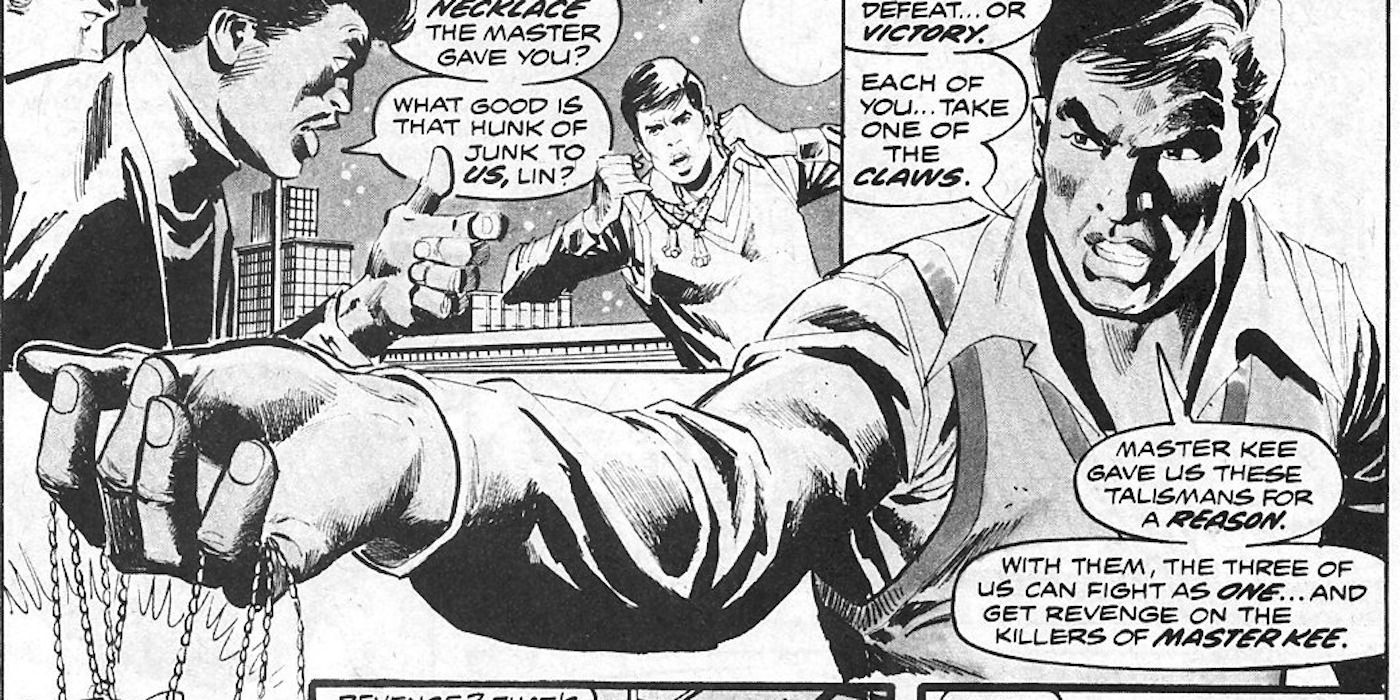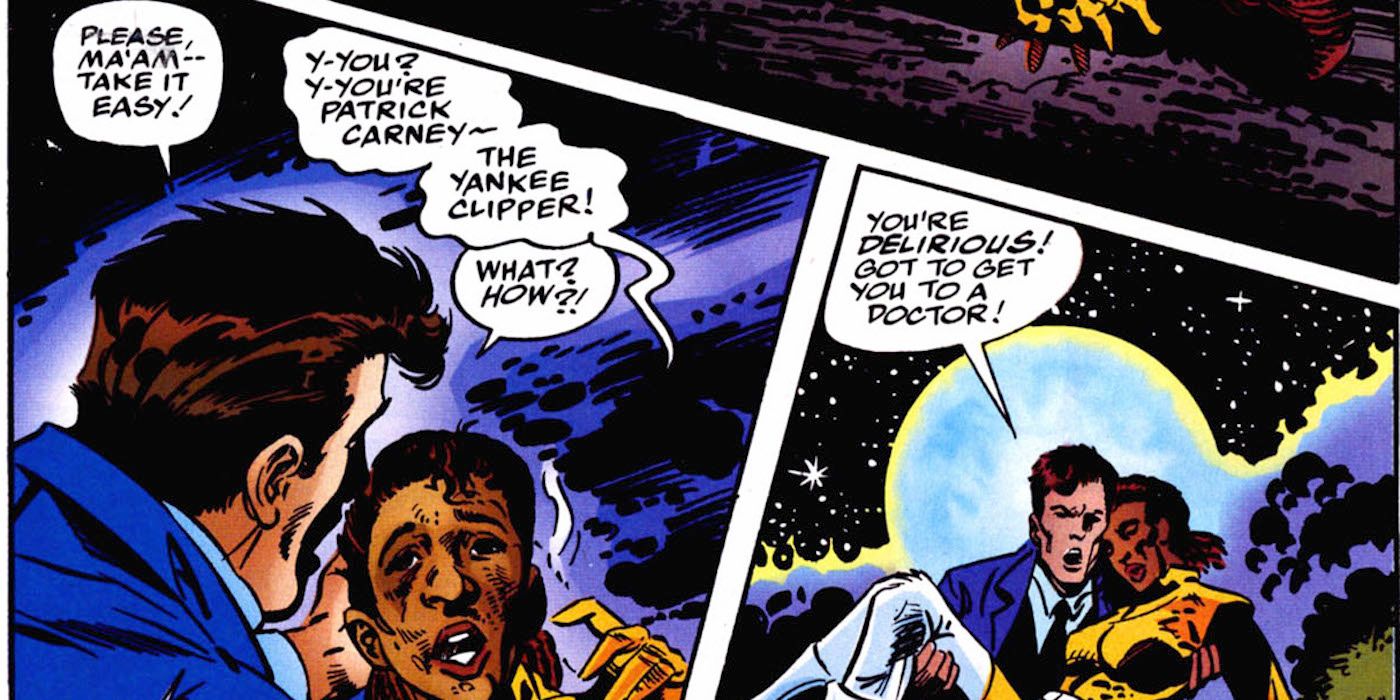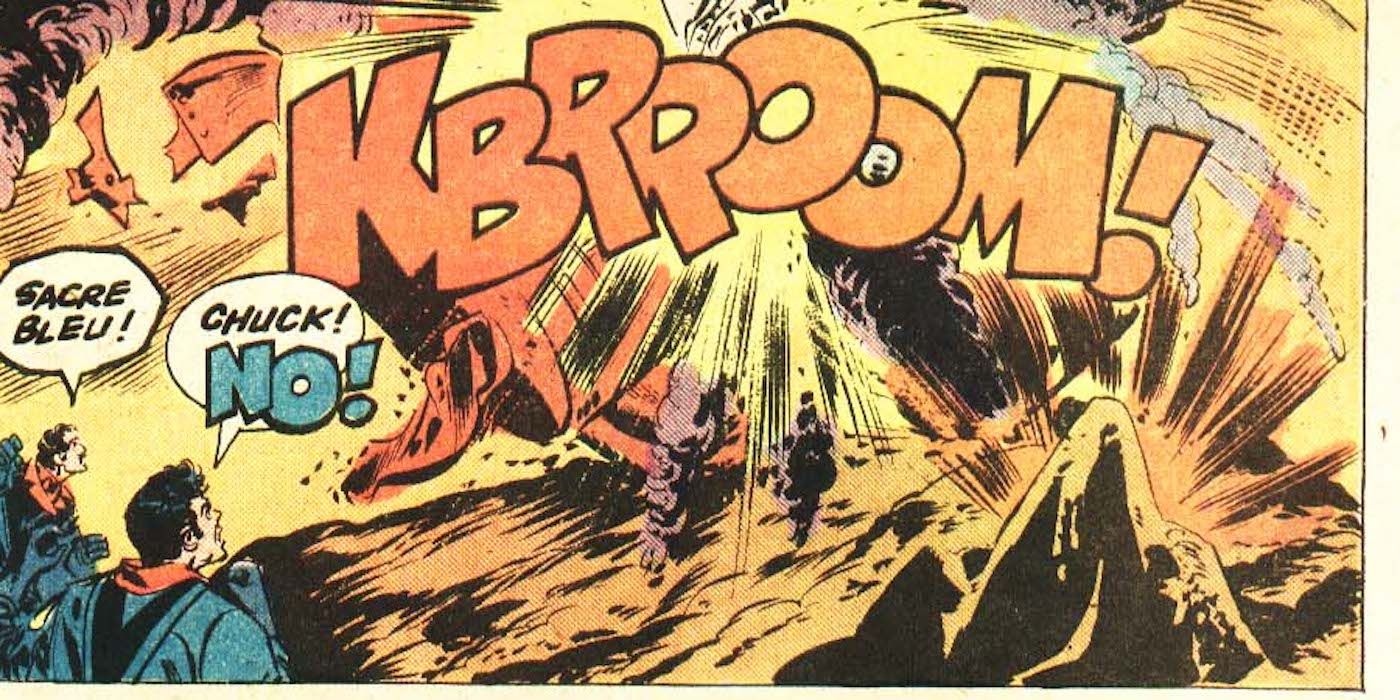Becoming a comic book superhero is usually a lifelong commitment. No matter how thoroughly heroes get written out — crippling injuries, loss of powers, old age — there’s always a writer eager to revive them later on. Sometimes the writer has a genuinely cool take, sometimes they just want to bring back a childhood favorite. Some writers even bring back retirees just to kill them off, whether it's a heroic final struggle or a brutal death in the "grim and gritty" vein.
Only a few superheroes have actually walked away from the life, such as the fifteen collected here. Some did it by choice, some were forced into retirement, and some just got a bit too old. Several retirees kept doing heroic things, but they never put on the costume again. Given comics’ fondness for revivals, reboots, retcons and resurrections, everyone here might be back in action a year from now. But at least at the moment, these heroes stand as the rare retirees who got to hang up their capes for good — though few of them got to live happily ever after.
Here are 15 Superheroes Who Quit And Never Came Back.
15. Hellboy
Some people take on new careers in retirement. Hellboy wanted to avoid that, as his destined career was the destroyer of the world.
Hellboy materialized on Earth in World War II, thanks to a Nazi occult ritual. Starting in the 1950s, he began working for the Bureau of Paranormal Research and Development as a monster hunter and ghost buster. He didn’t worry too much about where he came from, or why his right hand was a massive, powerful fist of stone. In the 1990s, though, he began to understand the terrible truth: he’d been summoned to Earth as Anung un Rama, the bringer of the apocalypse. By the time of The Conqueror Worm in the early 21st century, he’d had enough: he left the BPRD to figure out who he was and who he wanted to be.
Although Hellboy abandoned monster hunting, the monsters still hunted him. His retirement wasn’t peaceful. Even after he died and descended to hell, he wasn’t allowed to rest in a rocking chair. Instead, he wound up bringing about the end of Hell, then moving on…somewhere. And hopefully finding peace.
14. Sandman (Wesley Dodds)
Wesley Dodds is a good example of how hard it is for superheroes to retire — he had to try several times before it took.
Originally a gas-masked vigilante with a pistol full of sleeping gas, the Sandman became much more memorable after Jack Kirby and Joe Simon turned him into a more dynamic, action-packed crimefighter. Years later, the retcon series Sandman Mystery Theatre elevated him to an A-lister, or at least a B+.
Like a lot of 1940s heroes, Sandman retired — 1946 was his last Golden Age adventure — then returned to action in the Silver Age. Later on, he’d retire due to age, guilt over a past mistake, and a stroke to top it all off. After his soulmate Dian Belmont came down with terminal cancer, Dodds intended to retire for good to be with her. Instead, he donned his costume one last time to fight off kidnappers. Only then did he finally embrace a life of peace and quiet with Dian until her death. If he hadn’t died so soon afterward (JSA #1), maybe he’d have put the gas mask back on yet again.
13. Starman (Jack Knight)
James Robinson’s Starman series was a critical and popular success. That may explain why in more than 15 years since it ended, nobody’s tried to bring Jack Knight out of retirement.
The son of Ted Knight, the original Starman, Jack had no interest in becoming a legacy hero. He believed his Dad had wasted his life fighting crime when his scientific genius could have changed the world. It was Jack’s brother David who took up their father’s cosmic rod and fought to protect the Knights’ hometown of Opal City.
After the son of Ted's old foe the Mist murdered David, Jack reluctantly became Starman. He discovered he was a natural as a hero, though that didn’t make him any less cynical about it. What led him to quit, though, was when he and his girlfriend Sadie had a baby. Sadie left Jack and Opal City, believing family life and superhero life were incompatible. After some soul-searching and some final heroics, Jack passed his cosmic rod — actually a cosmic staff — to Courtney Whitmore, AKA Stargirl, and followed Sadie into normal life. Who knows, maybe they did live happily ever after.
12. Veil
Madeline Berry had no more interest in becoming a hero than Jack Knight, and she was even happier to walk away.
During Marvel’s Dark Reign crossover event, Maddy was one of several teenagers subjected to agonizing experiments that triggered their superpowers. Madeline became Veil, with the ability to become living mist, a power that would eventually dissolve her body permanently. After Dark Reign ended, the Avengers recruited Maddy and several of the other guinea pigs for training at Avengers Academy. Not because they were potential heroes, mind you, but because they were at high risk for turning evil after the suffering they'd been subjected to.
Veil didn’t turn bad, but she never saw much point to endless clashes with supervillains, either. She left the Academy to work for Jeremy Briggs, a superhuman entrepreneur who agreed that there were better ways to do good. Briggs cured Maddy's deadly condition, but as a dry run for depowering all of Earth’s superhumans. Veil and her fellow students stopped that, then Maddy walked back to her ordinary, non-super high school life. She soon found out that her Avengers combat training made her a lot harder to bully, so at least she had that going for her.
11. Starman (Ted Knight)
When Ted Knight discovered the secret of tapping stellar energy, the excitement and glamor of becoming a superhero outweighed any thoughts of serious scientific research. As Starman, he wielded his cosmic rod against evil for years — like a number of DC’s Golden Age heroes, his aging was artificially slowed — until Jack Knight guilted Ted into quitting.
It was Jack’s one condition when he assumed the mantle of Starman. Ted would have to stop flying around in a costume and devote himself to practical applications of stellar power. Ted agreed, although his retirement wasn’t entirely peaceful. The criminal Dr. Phosphorus attacked the ex-hero unsuccessfully, but his radioactive touch ended up giving Ted terminal cancer.
When the Mist tried to destroy the Knights and their city once and for all, Ted sacrificed himself to defeat his old foe. True to his promise, he did it without getting back into costume. Before he died, he gave the results of his groundbreaking research to Jack, to share with anyone who could make use of it.
10. Shogun Warriors
Tell someone the Shogun Warriors retired and never returned and the most likely response is “Who were the Shogun Warriors?”
Marvel’s Shogun Warriors debuted alongside Micronauts in 1979. Although both series were based on Japanese toy lines, Shogun Warriors never came close to its sibling’s success. The opening issue told how the alien Followers of Light recruited three humans to pilot the giant robots Raydeen, Combatra, and Dangard Ace. This was before anime and manga made mecha a common thing in American pop culture, though Marvel had already introduced a more interesting mecha, Red Ronin, in Godzilla.
After twenty issues, the Shoguns defeated the alien threat the Followers created them to battle. Soon after, in Fantastic Four #226, a criminal used the Followers’ tech to create a fourth mecha, Samurai Destroyer. He smashed the Shoguns as a potential threat, but didn’t take out the pilots. With the FF’s help, the trio destroyed the Destroyer, then returned to normal life. If the toy line hadn’t flopped too, perhaps they’d have returned.
9. Green Lantern Katma Tui
Unlike Jack, Maddy, or Hellboy, Katma Tui didn’t want to retire as a Green Lantern. But DC didn’t give her an option.
Katma Tui became the Green Lantern of Korugar after her predecessor, Sinestro, turned evil. When John Stewart took over from Hal Jordan as Earth's Green Lantern, the Guardians of the Universe assigned Katma to train him. She wound up falling in love with him and permanently relocating to Earth.
DC, however, wanted to make Hal Jordan unique, rather than just another one of hundreds of ring wielders. When the Corps executed Sinestro for his crimes in Green Lantern #222, it triggered a failsafe in the power rings (explained by a convoluted, contrived retcon) against killing Korugarians. The failsafe depowered almost the entire Corps; Hal’s ring survived, but Katma’s and John’s did not.
As if that wasn’t enough, after Katma and John settle down on Earth, Hal’s enemy Star Sapphire hacked Katma to pieces. It was a classic example of “fridging,” killing a female character solely to give her boyfriend/husband something to angst about. Although Sinestro and the Corps returned, poor Katma has stayed dead. She deserved better.
8. Miss America
Unlike the other Madeline in this list, Golden Age crimefighter Madeline Joyce enjoyed being a superhero. After a typical freak lab accident, Maddy acquired increased strength and the power of flight, which she used as Miss America starting in Marvel Mystery Comics #49. Along with her solo career, she served as a member of Marvel’s WWII Liberty Legion and Invaders super teams (retcon groups actually created in the 1970s) and the post-war All-Winners Squad. One of her teammates was Bob Frank, the super-fast Whizzer, and they soon fell in love. After the All-Winners disbanded, Maddy and Bob retired, married, and settled down.
The Franks did not, however, get a happily ever after. Their first baby was the radioactive freak Nuklo; their second baby was stillborn, and Maddy died giving birth to him. Bob eventually got back into costume as the Whizzer, so odds are that Miss America would have returned too, had she lived long enough.
7. Black Canary (Dinah Drake Lance)
The Golden Age Black Canary’s retirement retconned away a previous retcon saddled with an unintended incestuous subtext.
Before Justice League of America #219-20, Black Canary’s history was straightforward. She’d become a superhero in the 1940s, retired to marry boyfriend Larry Lance, come out of retirement, become widowed (a living star killed Larry), and started a relationship with Green Arrow. By the 1980s, however, Dinah’s Golden Age roots made her twenty-five to thirty years older than Ollie.
The two-part JLA story fixed the age gap: Ollie’s girlfriend was really the original Canary’s daughter, with her dying mother’s mind transplanted into her formerly comatose body (a memory wipe kept her from knowing this). As some fans pointed out, that meant Larry Lance’s biological daughter had Mom's memories of sex with Dad. Squick.
After DC rebooted much of its continuity in the mid-1980s, Black Canary’s history got straightforward again. The Golden Age version retired for good at the end of the 1940s. Her daughter took up the name, but without any mind transfers, memory wipes or incestuous memories. It was a good call.
6. Iron Man and Hawkeye (Earth-982)
On Marvel’s Earth-982, the characters are about 15 years older than their counterparts on Earth-616, the “real” Marvel Universe. That’s plenty of time for an entire generation of Avengers to quit or die.
When a new team forms in A-Next #1 — Juggernaut, Mainframe, Thunderstrike, and Stinger — they don’t know what happened to their predecessors. Eventually, they learned how the old team fought off an invasion from another parallel world where Doctor Doom ruled with absolute power. To stop the villain's 500-strong superhuman Thunderguard from striking at 616, the Avengers struck first, bringing every available hero, ex-hero, and reserve member to the fight. They succeeded, but only seven Avengers made it home. Tony Stark and Clint Barton were among them, but they had no heart left to fight anymore.
They did not, however, abandon their old team. Tony created Mainframe, an AI in an armored body, to fill the Iron Man role. Hawkeye trained a “Dream Team” including American Dream and Bluestreak to join the other new Avengers in combat. The old guard could quit fighting, but they couldn’t quit being Avengers.
5. Spectre (Jim Corrigan)
Most heroes retire, then die. For Jim Corrigan, it had to be the other way around — he was dead before he ever became a superhero.
After Corrigan’s murder in More Fun #52, God sent his spirit back to Earth to wage war on evil as the supernaturally powerful Spectre. Decades later, in the 1990s Spectre series, Corrigan learned that wasn’t exactly what God had in mind. The Spectre wasn’t Corrigan's soul, but an angel of vengeance bound to Corrigan's spirit. Their mission wasn’t to simply smite evil, but to understand it, and themselves.
Ultimately, Corrigan did gain understanding. He saw how his own anger at evil stemmed from his abusive, fundamentalist father, and he eventually found the strength to forgive the man. With his soul finally at peace, Corrigan received the funeral he’d never had and entered the afterlife at last. The Spectre stayed behind, and eventually moved on to other hosts, including Hal Jordan (he was dead for a while) and Det. Crispus Allen.
4. Silk Spectre (Sally Jupiter)
When Silk Spectre retired, she took a generation of superheroes with her.
In Alan Moore’s Watchmen, Sally was one of the Minutemen, a team of superheroes that sprang up after the first costumed crimefighter, Hooded Justice, appeared in 1938. Some Minutemen fought for justice, some for excitement; Sally fought primarily for publicity. Becoming a superhero was a big boost to her modeling career. It also led to tragedy, when one of her teammates, the Comedian, raped her. Implausibly, they went on to have an affair (possibly the weakest plot point in Moore’s story) and he became the father of Sally's child, Laurie, the second Silk Spectre.
In 1947, Sally married her agent and quit the superhero business for good. As the Minuteman Nite Owl later put it in Watchmen #2, with her departure, the fun just drained out of what they were doing. The team fell apart and most of the members returned to everyday life. Sally would continue making the most of her celebrity, and even in old age, she looked back nostalgically on her time as Silk Spectre.
3. Sons of the Tiger
When martial arts became big in the 1970s, Marvel dove in with both feet. Some characters — Shang-Chi, Iron Fist — became stars. The Sons of the Tiger? Not so much.
Debuting in Deadly Hands of Kung Fu #1, Abe Brown, Robert Diamond, and Lin Sun were talented martial arts students from vastly different backgrounds. When their dying sensei, Master Kee, gave them a trio of tiger-claw talismans, the gift transformed the three men into the Sons of the Tiger. Wearing the talismans, any one of the guys had the skill of all three; fighting together, they moved as one. Their main adversaries were the Silent Ones, pre-human beings who hoped to leave their dying host bodies and take over the three mortals.
The team triumphed over the Silent Ones and their agents, but fell apart over a woman. Abe, Bob, and Lin abandoned their amulets, went back to everyday life and stayed there (though Abe briefly became another hero, the Black Tiger). The amulets passed to the Ayala family, three members of which have used them to become the White Tiger.
2. Yankee Clipper
When readers last saw Yankee Clipper, he dithered about whether to retire. As he hasn’t been seen since Marvel: The Lost Generation #1, it's safe to presume that he decided to hang it up.
As told in Marvel: The Lost Generation, Pat Carney was just an engineer and ex-baseball player until he met a dying time traveler in the mid-1950s. The woman gave him her tachyon belt, which enabled Carney to become a superhero. Wanting a patriotic name, he borrowed baseball legend Joe DiMaggio’s nickname, the Yankee Clipper. Carney went on to forge several other superheroes — Nightingale, Effigy, Black Fox — into America’s “First Line” of defense. Soon after that, the belt misfired, hurling Carney decades into the future.
When the Clipper materialized again, he learned his entire team was dead, killed fighting off during a Skrull invasion of Earth. A new heroic age had begun with the debut of the Fantastic Four, but Carney wasn’t sure he had a place in it. Apparently, he thumbed down returning as the Clipper, but of course, a time traveler can always pop up again when someone finds a use for him.
1. Blackhawks
After thirty years of heroism, DC ended the Blackhawks’ career in a letter column.
When the Blackhawks debuted in Quality Comics’ Military Comics #1, they were aviators waging war on the Axis outside the regular Allied military. The strip was a hit, and after Quality closed its doors, DC took over publishing Blackhawk (no “s” — Blackhawk was the team leader). By 1968, the team had sunk to third-tier heroes — if you want to be charitable — and their book folded with #243.
A decade later, the Blackhawks returned, now working as high-priced but ethical mercenaries. By #250, though, the team members were in sorry shape: Chuck was apparently dead, Hendrickson had a heart attack, and Chopper had crippling injuries. Nothing comic book characters can’t bounce back from, of course, but the axe fell before they could get to bouncing. The letter column informed readers that Chuck and the others would not recover, so Blackhawk had disbanded the team. As the subsequent Blackhawk series took place earlier in the team's history, it seems they never reunited.
Ending things in a letter column? DC, that’s harsh.
--
Do you know of any other heroes that called it quits and never returned? Let us know in the comments.

